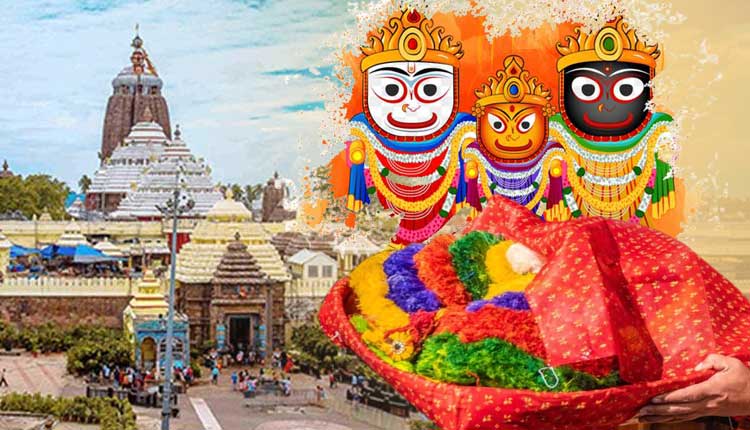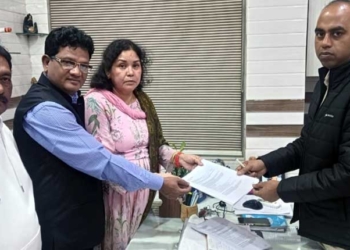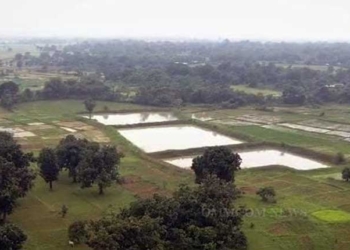Bhubaneswar: Rakhi Purnima, also known as Gamha Purnima, is widely observed throughout Odisha with great zeal. The celebration honours the affection between brothers and sisters.
Every family begins preparations for the festival very early in the morning, with brothers and sisters leading the way. Boys are fully prepared with gifts for their cherished sisters while females prepare the “puja thali” filled with colourful “rakhis” along with chandan-tilak, sindoor (vermilion), akshat (rice), lamps, and sweets. Girls apply tilak on their foreheads and wrists and bind rakhi threads after performing ‘aarti’ for the safety of their brothers. In exchange, the sisters receive gifts from their brothers as a sign of love, and they promise to look out for them.
Any male can be “adopted” as a brother by tying a rakhi, whether they are cousins or close acquaintances. Several socio-cultural organisations also observe it with the aim of fostering fraternity. Rakhi need not be given to biological brothers solely.
In Odisha, Rakhi Purnima is observed with all the customs at the Lord Jagannath Temple in the pilgrimage city of Puri on the auspicious festival of Gamha Purnima, which is the birthday of Lord Balabhadra or Balaram.
Lord Balaram was born on the “Gamha Purnami on Makara Lagna” of the Shravan nakshatra. Therefore, He is the founder of agriculture and the Lord of the farms. As a result, farmer families worship their wooden ploughs as per custom. ‘Gamha’ is likely a derivative of the word ‘Go-mata. According to the Harivamsa, Lord Balaram was conceived from a cow named Rohini. He is, therefore, closely related to the herds of cattle. Rakhis are attached to the cattle’s horns, and the animals are decked with garlands on this day. The animals are given several sorts of treats and pancakes.
The birthday of Lord Baladeva is commemorated in Odisha, particularly in Paralakhemundi, Nayagarh, Brahmapur, and other areas, through the play of the well-liked game known as Gamha-Diyan (the Gamha Jump). It is an essential component of Odisha’s martial tradition. The Paikas believed that this day was the most favourable for starting the new combat techniques.
Even though Lord Jagannath, together with his siblings Lord Balabhadra and Devi Subhadra, are worshipped as Daru-Brahma at Srimandir Puri, He observes festivals and adheres to all the rituals just like a regular person would. On this day, Lord Balabhadra and Lord Jagannath receive rakhi from their sister Devi Subhadra, who also ties one on herself.
Four rakhis are performed by members of the Patara Bisoi servitors on this special day. Lord Jagannath’s rakhi is red and yellow, whereas Lord Balabhadra’s is blue and violet.
The birth ceremony of Lord Balabhadra is observed in Srimandir on the day of Gamha Purnima. Lord Jagannath, Balabhadra, Subhadra, Sudarshan, Bhudebi, and Sridebi are the six idols of Ratnabedi that are all ornamented with gold.
With the aid of Puja Panda, Pati Mohapatra, and Mudirasta, the Sudha Suar servitors get ready for puja. For the Jhulana rites (the swing rituals), Madan Mohan, the representative of Lord Jagannath, Balabhadra, and Subhadra, is offered the order of Lord Jagannath (Angyamala). Sudarshan then steps down from his seat and boards the “Chaudola” known as “Harida Mali” adorned with golden garlands.
The deity then makes his way to Markandeya pond. Using wet clay to create the idol of Lord Balabhadra, Sudha Suara performs several rites.
The idol is given life by the mantras chanted by the Puja Panda. There, bhoga is offered to the idol. The idol is then submerged in the pond. Immediately following the idol’s immersion, Lord Sudarshan returns to Srimandir late in the night.
















